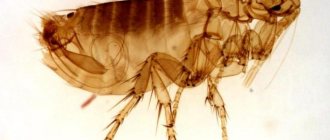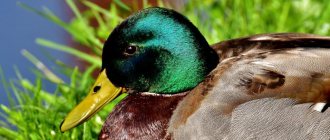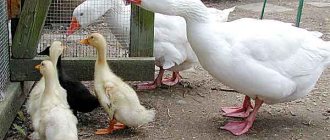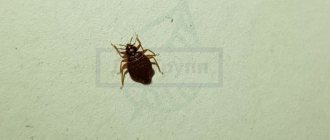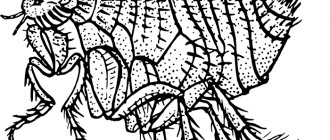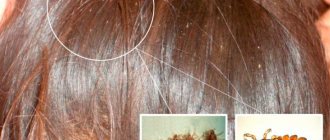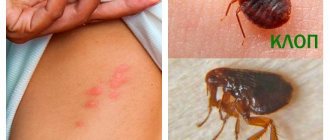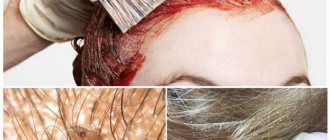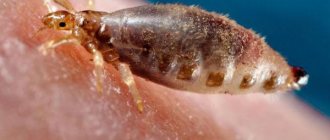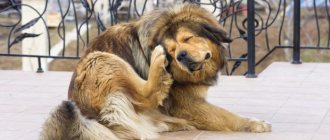Differences between lice and fleas can be traced by the size of adult individuals (the former are smaller than the latter), habitat, lifestyle and other parameters. The only similarity between the parasites is that both are blood-sucking insects. Fleas mainly live in the fur of animals, on the body, while lice live in the scalp of humans.
Large insects are capable of laying eggs in secluded places indoors: carpets, sofas and others. Small parasites reproduce only on the human body. Fleas are more dangerous, since these insects are considered carriers of typhus, helminths and plague. Lice mainly cause an allergic reaction localized to the site of the bite.
- Who do parasites bite?
- Harm from parasites
- Lifestyle Differences
- Appearance
- Lice Reproduction
- Fleas
Who do parasites bite?
To maintain their vital functions, lice and fleas feed on the blood of representatives of the animal world, including humans. At the same time, the type of “nutrition” of parasites is different. At the nit stage, fleas develop a digestive system that can “receive” the blood of any warm-blooded animal:
- cats;
- dogs;
- rabbits;
- person and others.
Lice parasitize exclusively on the human body. This feature is explained by the way of life. Fleas, unlike lice, move by jumping. Therefore, this species is able to move from one warm-blooded animal to another. Lice lack this feature, and therefore are forced to adapt and feed on the blood of a specific host.
The main methods of treating pediculosis
Methods of disposal depend on the type of parasite. For body lice, in addition to treating the patient’s body with pediculocidal agents, it is necessary to boil or steam clothes and underwear. To destroy parasites, you can use specialized drugs. After this treatment, you should air the laundry outdoors under the sun. Regardless of the chosen method, special attention should be paid to seams, folds, and fur inserts.
Pubic lice are removed in the following ways:
- • Boiling all clothes
- • Freezes laundry for 12 hours
- • Shaving followed by disinfection with 5% boron ointment
- • Removing parasites from infested areas using tweezers
Traditional methods for killing head lice:
- • 20% water-soap solution of benzyl benzoate
- • kerosene
- • vinegar solution
The methods are aimed at paralyzing insects and dissolving the shell of nits. The chosen product is generously moistened with hair and scalp. The drug is left for 1.5-2 hours. After treating the head, the hair should be thoroughly combed with a metal comb to collect nits.
The active ingredients of traditional methods are toxic and can cause irritation and headaches. This is why experts recommend using specialized pediculocidal drugs.
Harm from parasites
Because lice and fleas gain access to blood by biting through the skin, they leave red and itchy patches on the body. Such consequences are explained by the body’s allergic reaction to external influences. With increased skin sensitivity, a bite can lead to more serious complications, including dermatosis.
The danger of lice lies in the fact that this type of insect is considered to be a carrier of typhus. The infection is now highly treatable.
Fleas, due to the nature of their life activity, are considered more dangerous pests. By parasitizing warm-blooded animals, insects are capable of transmitting various types of infections. Fleas that live on the bodies of rats or cats walking outside are considered more dangerous. This type of parasite is also capable of transmitting helminths. Flea larvae and adults release worm eggs into the human blood during bites.
How to choose drugs against ectoparasites
Regularly treating your pet with insecticidal preparations can help relieve the animal of unpleasant symptoms, maintain an impeccable appearance of the coat and protect it from the dangerous consequences of infection. Before purchasing products, you should consult with a specialist. The veterinarian will determine which insects caused the deterioration of the animal’s condition and select a drug. In especially severe cases, complex treatment may be required, including elimination of symptoms of concomitant diseases (dermatitis, eczema, allergic reactions, helminthiasis).
Among veterinary drugs, the following dosage forms are distinguished:
- shampoo.
“Lugovoi” is suitable for treating pet hair and killing parasites, and “4 with a tail” has a short-term repellent effect, that is, it scares away ectoparasites from cats and dogs; - collar
(“Leopard”). It is used for therapeutic and preventive purposes against lice, lice, fleas, and ixodid ticks. Provides protection for up to 4 months; - spray
(“Bars”, “Bars forte”). Products in this form are convenient for use and help protect the animal from insect attacks for up to 1 month; - drops on the withers
(“Bars”, “Bars forte”). Ideal for unruly dogs or aggressive cats. The product is applied to the withers area and provides protection for up to 1–2 months.
Before choosing an insecticidal or insectoacaricidal drug, you must consult a specialist, and before use, read the instructions.
Lifestyle Differences
Knowing the difference between lice and fleas, you can choose effective methods for treating head lice and controlling pests without consulting a doctor. Small insects are characterized by the following features:
- permanent habitat - hair on the human body;
- localization - mainly near the hair shaft;
- move quickly.
The following features are characteristic of fleas:
- move by jumping, covering a distance of up to half a meter;
- constant migration from one medium to another;
- the ability to survive and reproduce outside the host's body.
Differences between fleas and lice can also be traced in other parameters.
Effective treatment
Products for the treatment of head lice should be easy to use, effective, safe for humans, and not cause resistance in insects. Paranit meets these criteria.
The active components of the product are dimethicone and mineral oil; they clog the respiratory openings of the parasite and nits, which leads to their death.
“Paranit” is not addictive to ectoparasites of lice and can be used repeatedly. The product is gentle on hair and scalp. The drug is available in the form of shampoo, lotion, and aerosol. For pregnant women and children over 1 year of age, a special form “Paranitis Sensitive” has been developed.
Pediculosis is not a problem if you have proven, reliable remedies at hand, such as Paranit. The drug will get rid of parasites, while maintaining hair and health.
Appearance
Having determined how a flea differs from a louse in its lifestyle, it is worth considering the appearance of the insects. Such knowledge helps to develop a pest control strategy. Since lice and fleas look different, each insect should be considered separately. The first ones are distinguished by the following features:
- body flat on the sides;
- small size;
- gray (translucent) color or red (after saturation);
- short legs.
The second insects are distinguished by their large size and brown body with long hind legs.
Types of disease
Pediculosis or lice is a contagious disease caused by lice infesting the surface of the human body.
Pediculosis can be head, pubic, body or combined, when two or three types of insects live on one person at the same time. The head and dress species interbreed and produce fertile offspring.
What types of lice do humans have?
Head lice
The disease is caused by insects pediculus humanus capitis. These are parasites with a body 2-3 mm long. Females are larger than males, growing up to 4 mm. In the male, the body is rounded at the back; in the female, it is divided in two.
Parasites feed only on human blood - several times a day, in small portions. They cannot fast for more than a day. Insect bites cause severe itching. A serious complication of lice is matting - when the hair on the head sticks together into a solid lump, under which there is festering skin.
Lice are very picky about temperature. At +20 °C they stop reproducing and the larvae stop developing. Head lice do not leave patients with a high fever, as body lice do, and therefore are not carriers of infectious diseases.
Insects prefer to be on the temples, back of the head and crown. There, females attach eggs less than 1 mm in size.
The fertility of females is low - no more than 4 eggs per day. The female lives for about a month. During her life she lays about 300 eggs. The egg develops in 9 days. Then the larvae of the first stage of transformation emerge from it. After going through two more transformations, the larva becomes sexually mature.
It takes two to three weeks from the laying of an egg to the appearance of an insect capable of laying eggs.
Body lice or corporal
The body or body louse (pediculus humanus humanus) is larger than the head louse. The length of its body is up to 5 mm, the coloring is weakly expressed. The insect lays eggs on clothing or on human vellus hair. The egg size is 1 mm.
Body lice can abstain from food for two to three days, and at low above-zero temperatures they can survive without humans for a week. The lifespan of an insect is 30-40 days, the maximum is 60 days.
Parasites settle on the human body in the neck, shoulder blades and lower back, in the seams of clothing and bedding. Body lice never live on the head - their paws simply cannot grab onto the hairs. If the body parasite accidentally ends up on the head, it will not stay there for long.
Insects cause a special type of lice, which is popularly called “tramp disease.” After the bite, the body itches for a long time. When scratching the bitten area, foci of secondary infection appear on the skin.
Body lice carry typhus and relapsing fever. Infection occurs through scratching - when a louse is accidentally crushed and rubbed into the skin. At the same time, typhus pathogens - Obermeyer's spirochetes, which live in the body of the louse, penetrate into the lymph or blood.
In 1928, French bacteriologist Charles Nicol received the Nobel Prize for his discovery of the role of body lice in the transmission of infection.
Epidemic typhus or trench fever is an infectious disease transmitted by the body louse.
At a temperature of 38.5 degrees, parasites leave the human body en masse in search of a new host, which contributes to the spread of typhus.
The disease spreads especially quickly during difficult historical periods - it is during such times that outbreaks of lice are observed.
Pediculosis pubis
The pubic louse (Pubic louse, phthirus pubis) is a small insect with a trapezoid-shaped body up to 1.5 mm long. People become infected with pubic louse through bedding and underwear, but mainly through sexual contact.
Pubic lice can settle on any areas of the body covered with coarse hairs: eyelashes, armpits, under the beard, mustache, and on the lower abdomen. When eyelashes are damaged, blepharoconjunctivitis begins.
The insect prefers to sit in one place, sticking its proboscis into the skin, so a person does not feel itching occasionally, but constantly. In places where the parasite sucks blood, characteristic blue marks appear.
Ploschica eggs are very small - up to 0.7 mm in diameter.
There is no need to undergo tests to diagnose lice pubis. The diagnosis is made after a visual examination. You will need a magnifying glass to detect nits. Adults and the skin marks they leave are visible without magnification.
Reproduction
To choose the right control method, it is important to know not only what nits look like, but also the differences between fleas and lice in their methods of reproduction. In particular, it is possible to determine in advance the area of future processing.
Lice
Lice parasitize the scalp, so such insects are rarely found outside the human body. Infection occurs through direct contact with the carrier or personal belongings (comb, hat, bed linen) of the latter.
The following features of lice are distinguished:
- life expectancy is one month, during which an adult lays 150 eggs (nits);
- the eggs are coated with a special substance that allows nits to cling tightly to the hair;
- young individuals appear one week after laying.
Nits, like adult lice, are light in color.
Fleas
These bloodsuckers rarely lay eggs on their host. More often, nits are localized near the place where people or animals live, in the folds of the carpet, behind the backs of furniture and in other secluded places. From laying to the appearance of young individuals, it takes from two weeks to two months.
The emerging worm-like larva initially remains outside the host’s body. This is due to the fact that young individuals do not feed on blood. In this case, the larvae remain near the place of residence of humans or animals.
Externally, flea eggs resemble poppy seeds, the surface of which has a brown or yellow tint. After several days, the larvae pupate. This process also occurs outside the warm-blooded body. At the end, a young individual is born, capable of feeding on blood. In the presence of optimal conditions for development, the described process takes less than one month.
More about fleas
The average lifespan of one individual is about 3 months. During this time, one individual manages to leave behind numerous offspring.
For a flea to die naturally, a combination of the following factors is necessary:
- temperature;
- humidity;
- access to products.
At high air temperatures, the lifespan of fleas is reduced to four weeks. The size of individuals increases. Accelerated maturation of eggs and larvae occurs. At low rates, insects live up to several months, and their body becomes smaller.
The reproduction cycle also depends on air temperature. Under normal conditions, it takes a month. At high levels - a week, at low levels - 8 months. Therefore, the path “from egg to flea” can take from 10 days to a year.
Popular myths
Contrary to popular belief, parasites do not live permanently on animals. They prefer to breed in quiet places. A flea jumps on a person or cat only for satiation, which lasts from a minute to an hour. After the individual drinks blood, it returns to a secluded corner.
Little pests are hiding:
- in the litter;
- in crevices;
- in carpets, etc.
Without a host, fleas live a long time, but they are not able to reproduce, since they need blood for this process. Therefore, when parasites are detected, urgent measures are taken to get rid of them. Insect eggs are viable and resistant to negative conditions.
Parasites can easily attach themselves to rodents, which will provide them with a basis for survival. Pests are capable of starving for weeks and this will not negatively affect their lifespan.
What are the similarities?
The similarity between the pests in question is that lice and fleas consume the blood necessary to maintain life. Lack of access to nutrient fluid provokes the death of the insect colony.
Another similarity between lice and fleas can be seen in the consequences that occur in the carrier of the parasites. The bites leave red, itchy spots on the body. A large colony of adult individuals can cause an allergic reaction and intense intoxication of the body with corresponding symptoms. Scratching (often unconsciously) of bite sites increases the risk of secondary infection and the development of a purulent process in the tissues of the epidermis.
The third similarity is that bloodsuckers, in the absence of a constant source of food, are capable of falling into suspended animation. In this state, insects remain viable. Anabiosis lasts more than a year. If at the end of the specified period the insects do not encounter a food source, the parasites die.
The danger of both for humans
When bitten, insect saliva enters the wound, causing itching and irritation. If the affected area is scratched, the area of spread of the poison increases, swelling and allergic reactions occur.
In addition, there are complications critical to health:
- • Secondary bacterial infections. They occur when pyogenic microbes penetrate the skin. Signs of the disease are superficial vesicular-pustular rashes on the scalp, face, and behind-the-ear areas.
- • Sepsis. Deadly blood poisoning. Accompanied by dysfunction of all organs.
- • Lymphadenitis. This is inflammation of the lymph nodes.
A key role in the risk of developing complications is played by the physiological state of a person. Infectious agents are actively introduced into the cells of the body, weakened by stress, overwork, unbalanced nutrition, and immunodeficiency states.
Getting rid of blood-sucking insects
There are several methods to combat blood-sucking insects. These can be both folk remedies and medications. Let's present the most common and effective ones.
Methods of destruction using folk remedies
Nits cause as much inconvenience to humans as they do to any animal. This technique has a wide range of effects. Folk natural remedies can rid the entire house of “uninvited guests.” Plants such as wormwood, lavender, incense, garlic, as well as lemon and pine needles are suitable here. The strong smell emanating from them drives away fleas and lice for a long time. You can combine them with other methods to enhance the effect.
It is also recommended to use infusions and decoctions of wild rosemary, tansy, and hellebore. To do this, you need to put the shoots with leaves in a small saucepan (you can take several varieties), add water and wait for the water to boil. The decoction should be cooled and used for its intended purpose. If you add grated tar and laundry soap to it, you can rinse bed linen and bedspreads in it for disinfection purposes.
Drug treatment
When affected by lice, fleas, and other blood-sucking parasites, itching, burning, pediculosis, and dermatitis (from frequent scratching) may appear. Such ailments are common not only to people (including children), but also to animals (especially those with fur). For insect bites, lindane, pyrethrium, and allethrin are used to treat lesions. Sometimes doctors even use mercury ointment or Vaseline. The list also includes:
- Creams or gels with menthol.
- Tar or laundry soap.
- Nittifor.
- Foxylon.
- Pedilin or Nyuda.
- Paranit.
- Para Plus.
- Butadione, Levamisole, Albendazole (tablets).
This is only a small part of the medications used to combat parasites. Distinctive features of these funds are the pricing policy, the area of influence, and the shelf life of the effect. There are many products on the market to choose from.
Disinsection of premises
To combat blood-sucking insects, as well as for preventive purposes, premises are disinfested. It does not matter whether it is residential, industrial or basement. For such purposes, special chemicals are used. They are sprayed over a specific distance using a spray gun or installation. To do this, it is recommended to wear protective clothing, a mask and gloves. There is a risk of poisoning. There are several products for this purpose.
Let's comment on them:
- The first stage will require wet cleaning using vinegar, bleach, ammonia or chlorine.
- Then use Dichlorvos, Karbofos, Tetrix, Raptor or Raid, Executioner, Clean House, Get (do not ignore corners, cracks, holes).
- After treatment, it is recommended to ventilate the room, wipe the walls and floor with a soda solution.
Routes of infection
The spread of parasites such as fleas and lice is always a sign of social crises. Large overcrowding and lack of basic hygiene skills lead to the widespread spread of these parasites among the population.
Another factor contributing to infection by these parasites is migration processes, especially from epizootic-prone areas.
Lice
Head louse is transmitted by contact with hair, by using hair care products of an infected person (comb, hairpins, etc.) and by wearing other people's hats.
Body fleas are spread by touching clothing, by wearing belongings of a sick person, and even by close bodily contact. This disease can be caught in public transport, crowded places and child care institutions.
Fleas
You can become infected with this parasite almost anywhere. Thanks to its jumping ability, a flea can jump on you on public transport, from the ground, or come on your pet after a walk. In urban environments, residents of the lower and upper floors are at particular risk. Fleas often love attics and basements; they have their own blood donors: birds and rats.
Distribution routes
The ways in which lice and fleas spread are different. What is the difference? The difference in distribution suggests 2 options. In the first case, insects independently colonize the areoles for reproduction (this happens rarely). In the second option, relocation occurs as a result of physical contact.
For example, if parasites inhabit a non-residential or residential building, then their eggs are found almost everywhere. When they come into contact with their habitat, they adhere to the object and are transported with it to a new place. Along with the eggs there may be larvae and adults. The object can be a person’s clothing, personal belongings, a bag of garbage, or animal fur.
Important! Animals transmit blood-sucking insects to each other through tactile touch. This is rubbing with fur, exchanging leashes or collars. Parasites are transmitted from person to person according to the same principle. This is friction with clothing, use of other people's personal belongings, through bedding.
Important! Lice and fleas are good at hiding when they see an aggressor. With their luggage they can migrate to another city or even country. After reproduction, the population increases several times. The propagation process will repeat again. Chemical or natural control methods help reduce this population.
lice eaters
This type of ectoparasite has a slight resemblance to lice in appearance. They also constantly parasitize pets, unlike fleas, which use mammals only as a source of food. Lice eaters differ from lice in having a gnawing type mouthpart and a more massive head.
Insects have three pairs of legs, with which they are firmly fixed to the body of the animal. Color varies from yellowish to gray. It is not the blood of mammals that is used as a source of nutrition, but particles of skin and wool. The incubation period for eggs is 3 weeks. Each female is capable of laying up to 70 eggs at a time. Thus, the rate of reproduction of parasites is very high.
The presence of parasitic insects can be determined by some characteristic signs:
- itching and irritation appear;
- Bald areas are observed on the pet’s body;
- there are areas of scratching and inflammatory processes in the damaged skin;
- possible development of dermatitis.
Means for combating larvae
Worms are destroyed with the same drugs as adult insects. The product is 100% effective when detecting areas of accumulation. In this case, powders, solutions, and aerosols are used. Folk remedies give good results.
Frequently used concentrates with a high degree of effectiveness are Executioner, Tetrix, Cucaracha. They mainly give preference to aerosols. The most popular brands are Raptor, Raid, Clean House, Combat, Dichlorvos, Karbofos.
Vinegar, turpentine, and kerosene are used as folk remedies. There is no point in fighting worms with herbs and repellents - they are insensitive to this matter. Powders and dusts also give poor results because they act when ingested.
The fight is being carried out comprehensively. Because it is necessary to destroy both adult parasites and their offspring. You should pay attention to the pet, otherwise the premises or animal will be re-infected and you will have to do everything all over again.
Lifestyle
The difference between fleas and lice is that the latter parasitize only in human hair, without leaving their habitat. This applies to head and pubic lice. Clothes live in the folds of linen and clothing. Fleas can exist anywhere. In the apartment, basement, in the yard, moving freely and looking for new habitats and breeding places. They do not become attached to a warm-blooded animal, although they feed on its blood. Fleas move in jumps up to 0.5 meters high and long. Whereas lice crawl in the hair and do not leave their shelter. Only 10% of the total number of fleas in the house live in the fur of cats and dogs. The rest settle in more secluded corners.
Lice on rabbits
Rabbits are parasitized by one species of lice, Haemodipsus venricosus.
Lice (hemadipsosis) in rabbits is recorded in all regions of Russia.
Epizootological data. Lice infestation is observed in adult rabbits, from which the parasites crawl onto suckling rabbits. Further spread of lice among rabbits is facilitated by their group housing, overcrowding, unsanitary conditions in rabbit cages, frequent movements of rabbits from one cage to another or to other farms, and non-compliance by rabbit breeders with the rules for quarantining rabbits newly admitted to the farm from other farms. The spread of the disease is facilitated by inadequate feeding of rabbits.
Morphology and development cycle.
Lice are small insects, the body length of an adult insect reaches 1.2-1.7 mm, flattened in the dorso-ventral direction, and do not have wings. The mouthparts of lice are adapted for piercing skin and sucking blood. The head is narrower and 2-3 times smaller than the chest. Attached to the chest segments are three pairs of legs with paws, each of which is armed with two claws. The last abdominal segment consists of 8-9 segments. The last segment of the abdomen in males is rounded, and in females it has a small notch. The color of lice is yellowish, while those that have sucked blood are reddish. In rabbits, lice are localized on the outer surface of the pelvic limbs, the hock joint, and in case of severe infestation, also on the back, sides of the body and other parts of the body.
After fertilization, female lice lay numerous eggs (nits), securing them with a sticky liquid at the base of the hairs. One female is capable of laying about 200 eggs. The eggs are oval in shape, with a pointed rear end and a wider front end with a cap. The size of the eggs varies from 0.50 to 0.66 mm. After 7-8 days, larvae 0.66-0.70 mm long emerge from the laid eggs. After three molts (2-3 weeks) they turn into adult lice. The entire development cycle of lice on a rabbit’s body lasts 30 days.
Clinical picture. Lice in all stages of their development and imago feed on the blood of a rabbit, secreting saliva at the sites where the skin of rabbits is punctured, which prevents blood clotting. In this case, severe itching occurs, and a small nodule forms at the site of the bite. Rabbits scratch itchy areas of skin against the cell walls, with their paws and even with their teeth. During a clinical examination, a veterinarian finds crusts and lost hair in areas of the outer integument affected by lice, especially on the outer surface of the pelvic limbs. At the same time, the lice themselves and their nits are detected. Rabbits with severe infestation often develop anemia and exhaustion.
The diagnosis of hemadipsosis is made on the basis of the clinical picture - we find lice and eggs at the roots of the hair, especially on the outer surface of the pelvic limbs.
Treatment is based on the use of various antiparasitic drugs. To expel lice from rabbits, dust therapy is used with a powder consisting of equal parts of tobacco dust and naphthalene. This procedure is carried out in a box by rubbing dust between the hair, especially in the area of the sides, hind legs and along the ridge. When treating a rabbit's head, you must try to ensure that the dust does not get into its eyes. Repeated treatment is carried out after 4-6 days in order to destroy the larvae that hatched from the nits. To treat an adult rabbit you will need 8-10g of dust, a baby rabbit -3-5g.
In addition to dust treatment, you can fight lice in rabbits by using insecticidal powder "Insectol", "Butok-10", sprays - "Franchline" and "BIO KILL". To treat rabbits, you can use 10-20g of 3-5% chlorophos dust or 2% sevin dust made with talc. They are treated with it 2 times, the interval between treatments is 1 week. 2-fold treatment is carried out to kill lice hatched from eggs.
After treatment for lice, owners must disinfect cages, nests and equipment with a hot 3% aqueous solution of creolin, scalding with boiling water, steam or burning with a blowtorch flame.
Prevention of lice in rabbits is based on compliance with the rules for the importation of newly acquired rabbits (they are imported if the imported rabbits have a 1st veterinary form or a 4th veterinary certificate); during a month-long quarantine, it is necessary to carefully examine the rabbits for lice infestation, not allowing rabbits with hemadipsosis into the general rabbitry until they are completely free of parasites.
